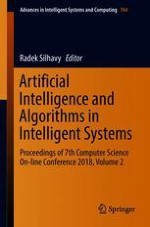2019 | Book
Artificial Intelligence and Algorithms in Intelligent Systems
Proceedings of 7th Computer Science On-line Conference 2018, Volume 2
Editor: Radek Silhavy
Publisher: Springer International Publishing
Book Series : Advances in Intelligent Systems and Computing
